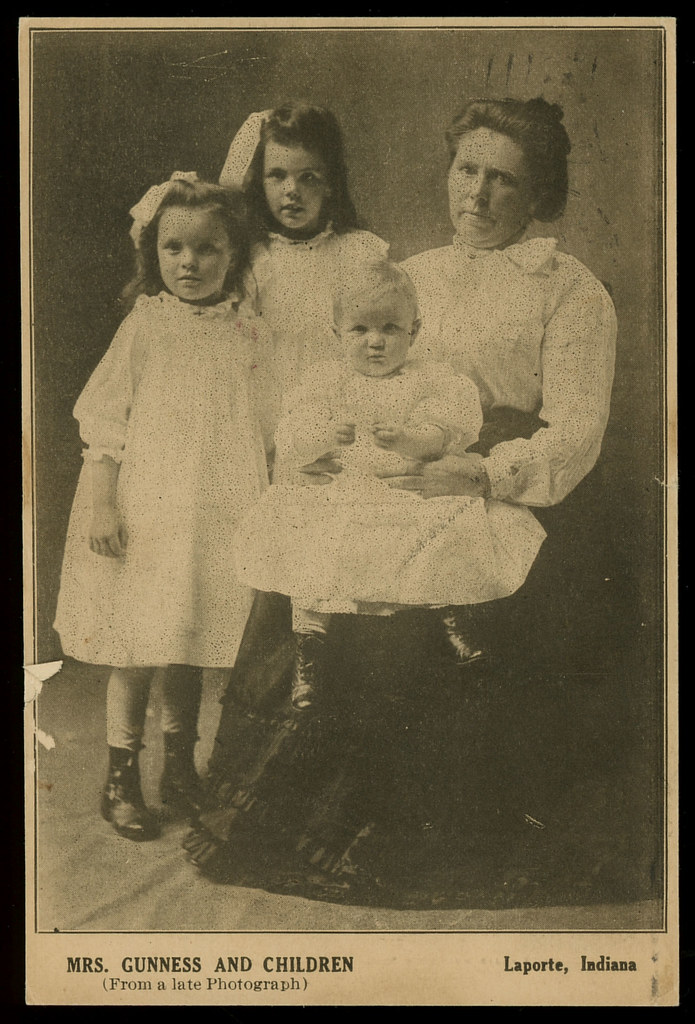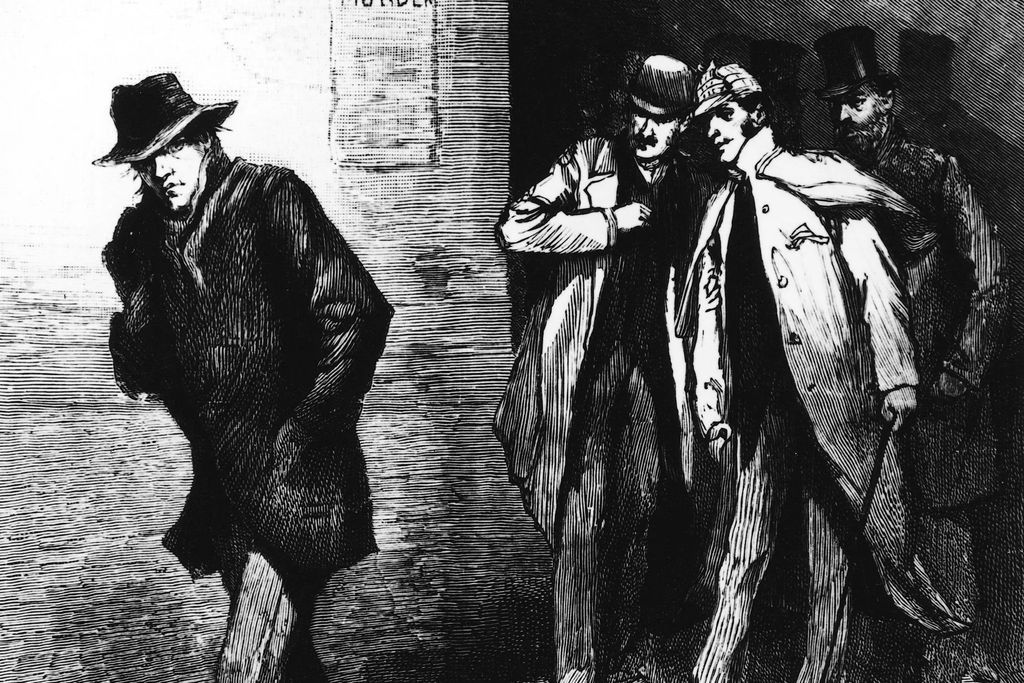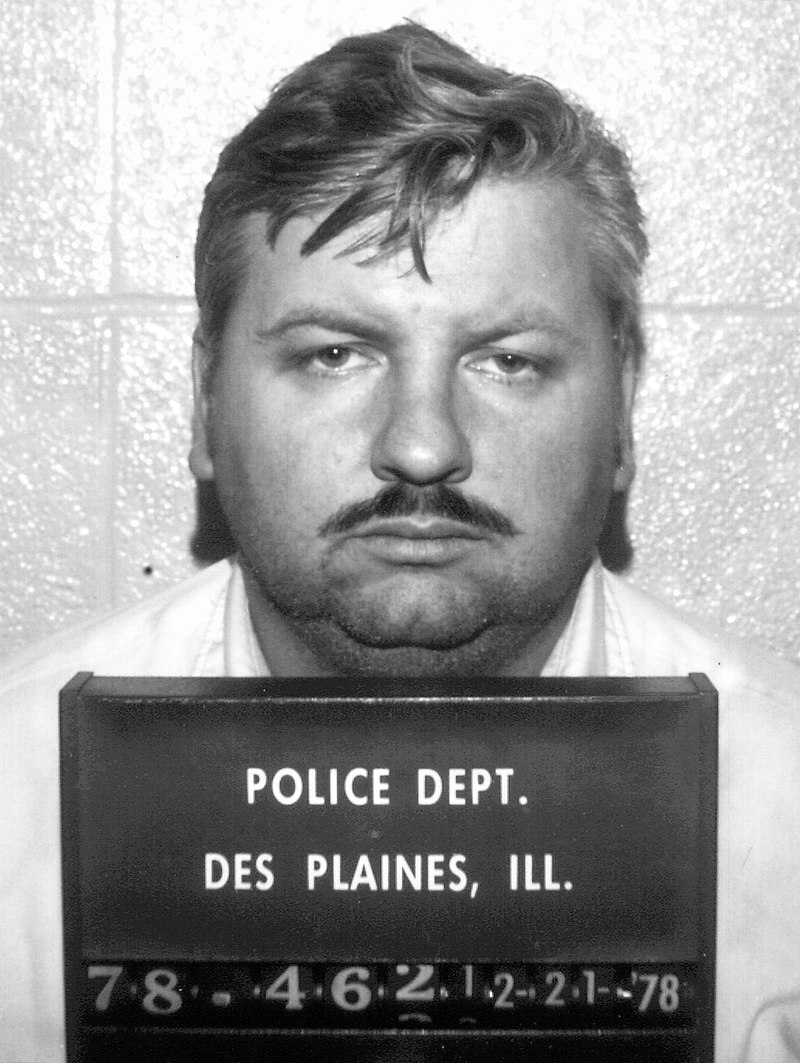“Serial killers continue to captivate both the public imagination and legal experts alike,” a chilling truth that echoes through time, pulling us into the darkest corners of human depravity. These individuals, often cloaked in the guise of normalcy and hiding behind respectable facades, commit gruesome acts of murder that leave profound and lasting psychological and societal scars. From the enigmatic figures shrouded in historical mystery to the chilling modern-day monsters who dominate our headlines, their stories compel us to confront the terrifying reality of evil.
What truly defines a serial killer is not merely the act of multiple murders, but a distinct pattern driven by deep-seated psychological motives. Unlike mass murderers or spree killers, who commit multiple murders in a short time frame, serial killers operate over an extended period, characterized by a “cooling-off” period between each heinous crime. This interval can span days, months, or even years, during which the killer may experience a resurgence of the insatiable urge to kill, meticulously planning their next horrifying act.
The motivations behind these serial killings are rarely practical; instead, they stem from a complex tapestry of psychological needs, often centered on a profound desire for power, control, or a twisted form of sexual gratification. Their choice of victims is frequently particular, often targeting specific groups based on age, gender, or other perceived vulnerabilities. Some may even follow a ritualistic method of murder, creating a sinister pattern or signature that becomes a horrifying hallmark of their crimes. These figures, often displaying traits of psychopathy or sociopathy, frequently show a complete lack of remorse, deriving satisfaction from inflicting pain or fear. While not every multiple murderer fits this specific profile, the combination of a deliberate pattern, a psychological motive, and repeated killings undeniably sets serial killers apart from other types of homicide offenders.
We embark on a detailed exploration of some of history’s most infamous serial killers, delving into their crimes and the enduring impact they’ve had on our collective consciousness. This journey is not for the faint of heart, but it is one that offers vital insights into the darkest facets of humanity, examining the societal responses and investigative challenges these monsters presented. Brace yourself for a journey into the abyss of human depravity.

1. Elizabeth Báthory (1560–1614)
Elizabeth Báthory, historically dubbed the “Blood Countess,” stands as one of the earliest and most chilling figures in the annals of serial murder. As a Hungarian noblewoman, she is famously accused of murdering numerous young women, with the grotesque alleged motive of bathing in their blood to preserve her youth. This horrific legend, steeped in both terror and aristocratic intrigue, has cemented her place in popular culture and even inspired Bram Stoker’s iconic character, Dracula.
The exact number of Báthory’s victims remains a contentious subject, sparking intense debate among historians and true crime enthusiasts alike. Some accounts suggest hundreds, while others argue for a more conservative but still terrifying count. Regardless of the precise figures, the sheer notoriety of her alleged crimes was immense, casting a long, dark shadow over 17th-century European aristocracy and terrifying the populace with whispers of unspeakable cruelty within castle walls.
A crucial aspect of Báthory’s case lies in the historical context surrounding her prosecution. The question of whether her actions were exaggerated or fabricated as part of a larger political conspiracy against her remains an intriguing subject of debate. From a legal standpoint, her case was profoundly influenced by the prevailing gender and class biases of her time, illustrating a stark intersection of power, privilege, and justice where her noble status likely played a significant role in how her crimes were both perceived and handled.
Her story continues to captivate, not just for its macabre details, but for the questions it raises about the abuse of power and the blurred lines between historical fact and legend. The legacy of the “Blood Countess” persists as a testament to the enduring human fascination with the dark side of aristocracy and the unimaginable depths of human cruelty, challenging us to discern the truth from centuries of myth-making.

2. Belle Gunness (1859–c. 1930)
Belle Gunness, a Norwegian-American serial killer, orchestrated a terrifying reign of murder that left over 40 people dead, including two husbands, numerous lovers, and even children. Her modus operandi was as devious as it was deadly: she lured unsuspecting men to her remote farm under the guise of marriage, promising companionship and a new life, only to brutally murder them for their insurance payouts and any valuables they possessed. Her story is a stark reminder that evil can wear many faces, including that of a seemingly ordinary, albeit large, farm woman.
Gunness’s case brought to light significant issues in criminal investigations during the early 20th century, especially in the scattered, often isolated rural areas where her crimes unfolded. Authorities at the time struggled immensely to manage evidence across vast distances and jurisdictions, lacking the coordinated resources and forensic technologies that would later become standard. This made it incredibly difficult to connect the disappearances and deaths to a single, cunning perpetrator, allowing her murderous spree to continue largely unchecked for an extended period.
The ultimate fate of Belle Gunness remains one of the most intriguing mysteries in true crime history. After a suspicious fire destroyed her house in 1908, a headless body, believed to be hers, was found amidst the ruins, alongside the remains of her children. However, many speculated that Gunness had faked her own death, escaping justice and vanishing without a trace. This lingering uncertainty about her disappearance and her true body count continues to fuel speculation and morbid curiosity, ensuring her legend endures as a master of deception and murder.
Her story highlights the vulnerability of individuals seeking love and companionship through unconventional means, as well as the dark side of desperation and greed. The sheer scale of her alleged murders, combined with the enduring mystery of her final act, has solidified Belle Gunness’s place as one of America’s most prolific and enigmatic female serial killers.

3. H.H. Holmes (1861–1896)
H.H. Holmes, born Herman Webster Mudgett, holds the chilling distinction of being often regarded as America’s first documented serial killer. His heinous crimes coincided with the excitement of the 1893 Chicago World’s Fair, a period of bustling activity and transient populations that provided perfect cover for his monstrous acts. Holmes constructed a hotel, infamously known as the “Murder Castle,” a diabolical edifice meticulously designed for torture and murder, equipped with secret passages, trap doors, soundproof rooms, and even gas chambers to facilitate his gruesome activities.
Holmes’ method of luring victims was terrifyingly ingenious and reflective of the opportunities presented by the World’s Fair. He would attract individuals seeking work or shelter, primarily young women visiting the city, to his hotel, where their fates took a dark and irreversible turn. The labyrinthine design of his castle allowed him to commit unspeakable acts, disposing of bodies with chilling efficiency through hidden chutes to the basement, where he reportedly dismembered and dissolved many of his victims, or even processed their skeletons for sale.
His case raised early and profound concerns about the regulation of properties and buildings, particularly in rapidly expanding urban centers, and the legal responsibilities of landowners in ensuring public safety. The sheer audacity of his “Murder Castle” brought to light the urgent need for more stringent background checks in the hiring of building contractors and greater oversight in construction, to prevent such a horrific structure from ever being conceived and built again.
Although he was caught and executed in 1896, the mystery surrounding the true number of his victims—estimated by some to be up to 200 people—still lingers. H.H. Holmes remains a potent symbol of cunning depravity and architectural horror, his story a chilling narrative that highlights the vulnerability of individuals in a booming city and the dark potential of a brilliant, yet utterly remorseless, mind.

4. Jack the Ripper (Unknown)
The identity of Jack the Ripper remains one of the greatest and most enduring mysteries in criminal history, captivating generations of amateur sleuths and professional investigators alike. This unidentified serial killer terrorized the streets of London in 1888, brutally murdering at least five women, all of whom were involved in sex work. The horrific nature of his crimes, marked by gruesome mutilations, instigated widespread panic among the public and triggered an unprecedented media frenzy that gripped the nation and beyond.
The case sparked intense public fear, particularly in the impoverished Whitechapel district where the murders occurred, transforming the killer into a spectral figure haunting the city’s dark alleys. While Jack the Ripper was never caught, the desperate hunt for him paradoxically led to significant, albeit nascent, advancements in forensic investigation. Police began to systematically collect and analyze physical evidence, however rudimentary, and employed rudimentary profiling techniques in their efforts to understand the killer’s patterns.
Jack the Ripper’s case vividly highlights the formidable challenges police faced in solving crimes with extremely limited forensic technology during the late 19th century. Without DNA analysis, fingerprinting, or advanced ballistics, investigators relied heavily on eyewitness accounts, often unreliable, and traditional detective work. This technological vacuum, coupled with the killer’s ability to vanish into the crowded, gas-lit streets of Victorian London, allowed him to evade capture, leaving a legacy of terror and unanswered questions.
The psychological toll on communities living under the constant threat of such violence was immense, permanently altering public perceptions of safety and prompting greater calls for policing reforms. His brutal methods and the media’s sensational portrayal turned him into a pop culture icon, fueling countless theories and fascination that continue to this day, making him perhaps the most famous and enigmatic serial killer in history.

5. John Wayne Gacy (1942–1994)
John Wayne Gacy, notoriously known as the “Killer Clown,” presented one of the most horrifying dualities in criminal history. By day, he was a respected businessman and a seemingly friendly community figure, even performing as “Pogo the Clown” at children’s parties. By night, he was a sadistic murderer, sexually assaulting and killing 33 young men and boys during the 1970s. This stark juxtaposition of his public persona and his private life as a brutal killer plunged the public into widespread horror and disbelief.
Gacy’s crimes led to intense and pervasive media coverage, particularly due to the macabre nature of his alter ego as a clown, which made his story even more disturbing and unforgettable. The discovery of many of his victims buried beneath his house in a suburban Chicago neighborhood shocked the nation, highlighting how a monster could hide in plain sight, blending seamlessly into the fabric of everyday life. The sheer scale and brutality of his acts underscored the terrifying facade some killers can maintain, leading to dangerous underestimations of their capacity for violence.
His trial highlighted the profound complexities of sentencing, as it raised contentious questions about the death penalty and the mental health of criminals. Gacy’s lawyers attempted an insanity defense, but he was ultimately convicted and sentenced to death, later executed in 1994. The case fueled widespread public debates about capital punishment and the societal responsibility in understanding and addressing the severe psychological disorders that can drive such heinous acts.
John Wayne Gacy’s charm and the horrifying duality of his life terrified people and reignited fears about the safety of children, leaving an indelible mark on the collective consciousness. His story continues to serve as a chilling reminder that appearances can be deceiving, and that the darkest evils can lurk behind the most unexpected and seemingly benign faces in our communities.

6. **Rodney Alcala (1943–2021)
Rodney Alcala, infamously known as the “Dating Game Killer,” exploited an unlikely platform for his predatory pursuits. In 1978, he appeared as a charming and charismatic contestant on the popular TV show ‘The Dating Game,’ a move that later showcased how media platforms could unwittingly serve as a stage for dangerous criminals. Despite winning the date, the bachelorette reportedly found him creepy and refused to go out with him, a gut feeling that likely saved her life.
Alcala was later convicted of multiple murders, though the full extent of his kill count, estimated to be far higher than the confirmed cases, remains a subject of grim speculation. His method involved using his charm and deceptive appearances to lure unsuspecting women. A talented photographer, he also took thousands of photographs of women and girls, many of whom were never identified, prompting investigators to believe he had many more victims scattered across the country.
His case raised important legal questions about the intersection of media and criminal investigations, particularly how public appearances could be utilized or scrutinized in hindsight for clues to a killer’s identity. It also highlighted the accuracy of victim identification, given Alcala’s ability to present himself as harmless and appealing, masking his true, violent nature. The challenges of linking his crimes across state lines further complicated his eventual capture and prosecution.
Rodney Alcala’s story is a chilling testament to the deceptive power of charm and the insidious nature of predatory behavior hidden behind a seemingly normal façade. The lasting impact of his crimes underscores the importance of public awareness and the critical role that media, however inadvertently, can play in both exposing and inadvertently assisting criminals, urging caution and vigilance in all interactions. His case serves as a stark reminder of the complexities inherent in recognizing and apprehending a highly manipulative serial killer.”
As we journey further into the macabre chronicles of serial murderers, we shift our focus to a profound analysis of their warped psychologies, the sensational grip they held on media and public imagination, and the evolving strategies employed by law enforcement to bring these monsters to justice.

8. Dennis Rader (1945–Present)
Dennis Rader, infamously known as the BTK (Bind, Torture, Kill) Killer, remains a chilling testament to the dual lives some predators can maintain. Between 1974 and 1991, Rader murdered 10 people in Wichita, Kansas, all while living a seemingly normal life as a husband, father, and active community member. His chilling moniker derived from his preferred method: binding, torturing, and killing his victims, baffling authorities for decades.
Rader’s psychological profile reveals a profound need for control, recognition, and sexual gratification intertwined with his sadistic fantasies. He meticulously planned his crimes, often stalking victims, and harbored distinct thrill-seeking behavior. His grandiosity was evident in his consistent taunting of authorities and the media through cryptic letters, where he detailed crimes and even suggested his capture, believing himself superior to law enforcement.
The BTK case became notorious for Rader’s prolonged evasion and the media frenzy surrounding his anonymous communications. These letters kept the public on edge and became central evidence, driving both fear and fascination. His ability to blend seamlessly into society as a benign figure created a pervasive sense of distrust, highlighting that evil can lurk in unexpected places and challenging public perceptions of safety.
Law enforcement’s decades-long hunt for the BTK Killer highlighted concerns about cold case investigations. Rader was finally apprehended in 2005 after resuming letters and including a floppy disk traced back to him. This breakthrough underscored the importance of perseverance and the power of digital forensics, even with advancing technology, to solve crimes that had long haunted communities.

9. Ed Gein (1950s)
Ed Gein, the notorious “Butcher of Plainfield,” may not have been as prolific as other serial killers, with only two confirmed murders, but his grotesque acts horrified the nation in the 1950s. His isolated farmhouse in rural Wisconsin became a real-life house of horrors, where he exhumed corpses from local graveyards and used their body parts to craft macabre household items, clothing, and furniture.
Gein’s psychological profile is a chilling study in psychosis, marked by an extreme Oedipus complex and a profoundly disturbed relationship with his deceased mother. His crimes were driven by a desperate desire to literally embody his mother, a twisted manifestation of grief, isolation, and sexual perversion. This complex inner world, fueled by years of neglect, abuse, and an unstable family dynamic, contributed to his development of antisocial traits and detachment from reality.
The impact of Gein’s crimes on media and public perception was immediate and profound, triggering widespread shock and disbelief. News of his gruesome discoveries spread like wildfire, challenging societal norms and forcing people to confront human depravity. His disturbing story inspired iconic horror villains like Norman Bates in “Psycho” and Leatherface in “The Texas Chainsaw Massacre,” cementing his legacy as a figure whose real-life horror transcended into fiction, forever influencing the genre.
Law enforcement’s discovery of Gein’s house was a landmark event, showcasing grim realities of investigations in remote, rural areas. The sheer strangeness and horror presented unprecedented challenges. Gein was ultimately found guilty but insane, raising critical questions about mental health and the legal system’s capacity to handle such extreme cases. His story contributed to a broader understanding of psychological complexities underlying severe criminal behavior.

10. Ted Bundy (1946–1989)
Ted Bundy stands as one of America’s most infamous serial killers, a charismatic and intelligent figure who murdered at least 36 young women across several states in the 1970s. His chilling modus operandi involved using his charm and manipulative intelligence to lure unsuspecting victims, often feigning injury or impersonating authority figures. He would then abduct and brutally murder them, leaving a trail of devastation that terrorized communities nationwide.
Bundy’s psychological profile is characterized by a profound lack of empathy, extreme grandiosity, and deeply ingrained antisocial personality disorder, stemming from a troubled childhood. He displayed classic thrill-seeking behavior, finding perverse satisfaction in the “cat-and-mouse” games he played with victims and law enforcement. His manipulative tendencies and superior intellect allowed him to project a facade of normalcy, making him particularly dangerous and difficult to detect.
The media’s portrayal of Ted Bundy was unprecedented, turning him into a perverse sensation. His charm and intelligence made him a captivating figure, with documentaries and films often romanticizing his character, sometimes overshadowing the brutal nature of his actions and the suffering of his victims. This intense scrutiny fueled public fear and sparked national conversations about the nature of evil and the deceptive power of outward appearances.
Bundy’s trials were a spectacle, highlighting the immense challenges law enforcement and prosecutors faced when dealing with a highly manipulative suspect. His escape from prison on two occasions further underscored difficulties in containing such a cunning individual. His eventual execution reignited debates about the death penalty and the long-term impact of violent crimes on survivors and victims’ families, forcing society to grapple with justice and the darkest corners of the human psyche.

11. Peter Sutcliffe (1946–2020)
Peter Sutcliffe, better known as “The Yorkshire Ripper,” brought a reign of terror to northern England during the late 1970s and early 1980s, murdering at least 13 women and attacking many others. His gruesome crimes, targeting primarily prostitutes but also other vulnerable women, plunged the region into a state of panic and fear. Sutcliffe’s brutal methods left an indelible scar on the communities he terrorized.
Sutcliffe’s psychological profile revealed a deeply disturbed individual driven by misogynistic fantasies and a twisted sense of mission. He harbored intense aggression and resentment towards women, believing he was on a divine mission to “cleanse” the streets. This profound psychological dysfunction, coupled with a cunning ability to evade capture, allowed his heinous spree to continue for years. His low frustration tolerance often triggered violent reactions, creating an addictive cycle of escalating violence.
The media’s coverage of the Yorkshire Ripper case was immense and highly sensationalized, contributing to widespread public fear and criticism of the police. Constant headlines and graphic details kept the public on edge, and the prolonged failure to apprehend the killer led to immense public pressure. This period was marked by increased anxiety, and public misunderstanding was rife, as media struggled to balance informing the public with avoiding panic.
The investigation into the Yorkshire Ripper was one of the largest and most costly manhunts in British history, yet plagued by missteps and missed opportunities. Despite numerous interviews, Sutcliffe evaded capture for five years, partly due to a hoax tape. The case ultimately led to significant reforms in police procedures, particularly regarding information coordination and forensic evidence collection, changing how law enforcement approached complex serial murder investigations.

12. David Berkowitz (1953–Present)
David Berkowitz, famously known as the “Son of Sam,” terrorized New York City during the summer of 1976 and 1977, killing six people and wounding several others in a series of highly publicized shooting attacks. His crimes, often targeting young couples in parked cars, created a climate of fear that gripped the city, etching his name into criminal history. The chilling notes he left behind, taunting police, fueled widespread panic and an intense manhunt.
Berkowitz’s psychological profile is a complex study of delusion and psychosis. He claimed his neighbor’s dog commanded him to kill, a narrative raising critical questions about criminal insanity and the mental state of killers. This profound mental illness, rooted in instability and a desperate need for control and recognition, deeply influenced his actions and ability to distinguish reality from delusion. His case highlighted how individuals with severe psychological disorders can be driven to horrific acts.
The “Son of Sam” case generated an unprecedented media frenzy, capturing headlines nationwide and significantly impacting public perception. The fear he instilled was palpable, with many New Yorkers altering daily routines and avoiding going out at night. The media’s sensationalized portrayal amplified the terror, creating collective anxiety. This period also saw the coining of “Son of Sam laws,” reflecting society’s moral outrage and need for policy changes in the wake of such sensational crimes.
Law enforcement’s efforts to capture Berkowitz were extensive, involving hundreds of detectives. A seemingly minor traffic violation ultimately led to his arrest. His capture brought relief to a terrified city and influenced how American courts viewed defendants who invoked insanity pleas. The Berkowitz case led to a broader understanding of the complexities involved in treating mentally ill offenders, sparking debates about mental health, criminal responsibility, and the justice system.

13. Jeffrey Dahmer (1960–1994)
Jeffrey Dahmer, chillingly known as the “Milwaukee Cannibal,” committed some of the most gruesome and disturbing crimes in modern history, murdering and dismembering 17 men and boys between 1978 and 1991. His heinous acts included necrophilia, cannibalism, and the preservation of body parts, shocking the world with their extreme depravity. Dahmer’s ability to lure victims to his apartment with promises of money or photographic sessions belied their horrifying fate.
Dahmer’s psychological profile is one of profound disturbance, marked by a rare combination of paraphilias, including necrophilia and cannibalism, alongside antisocial and narcissistic traits. His early life hinted at deep-seated issues, with a history of isolation, sexual fantasies, and a desperate struggle with his identity. The profound lack of empathy allowed him to commit unspeakable acts without remorse, viewing victims as objects for gratification.
The impact of Dahmer’s crimes on media and public perception was immense, generating a global mixture of horror, fascination, and revulsion. News of his gruesome acts captivated public interest and sparked widespread discussions about mental health and societal failures. The 2022 Netflix series “Dahmer—Monster: The Jeffrey Dahmer Story” further brought his story to a new generation, sparking renewed debates about the ethical portrayal of serial killers.
The investigation and prosecution of Jeffrey Dahmer prompted major changes in forensic psychology and the classification of serial killers. His case highlighted critical failures in police response, particularly regarding complaints from neighbors, leading to increased scrutiny of law enforcement’s handling of marginalized individuals. The Dahmer case underscored the importance of community vigilance, the need for improved communication between citizens and police, and the complex challenges of identifying a killer whose crimes defied conventional understanding.

14. Richard Ramirez (1960–2013)
Richard Ramirez, famously dubbed the “Night Stalker,” terrorized Southern California in the mid-1980s, embarking on a horrifying spree of at least 14 murders and numerous other violent crimes, including rape, burglary, and torture. His random selection of victims, attacking them in their homes at night, created a pervasive sense of fear across Los Angeles, turning ordinary nights into living nightmares.
Ramirez’s psychological profile revealed a deeply disturbed individual with a history of childhood trauma, heavy drug use, and an emerging fascination with Satanism. His behaviors were indicative of antisocial personality disorder, characterized by a profound disregard for others’ rights and a complete absence of remorse. The thrill-seeking aspect of his crimes, combined with his chaotic and impulsive nature, created an unpredictable pattern of violence.
The “Night Stalker” case became one of the most publicized trials in American history, dominating headlines and capturing the media’s full attention, which significantly impacted public opinion. Widespread media coverage, often detailing the gruesome nature of his crimes, shaped narratives about Ramirez even before his conviction. This constant media spotlight, coupled with his defiant courtroom behavior, created a public spectacle underscoring the power of media in influencing societal attitudes towards high-profile criminals.
Law enforcement’s pursuit of Ramirez utilized criminal profiling extensively, attempting to understand the patterns and motivations behind his attacks. The sheer scale and random nature of his crimes presented immense challenges, requiring unprecedented interagency collaboration. His eventual capture by vigilant citizens in East Los Angeles, after his face was widely publicized, highlighted the critical role of community involvement and effective public information campaigns in bringing a dangerous serial killer to justice.
As we conclude this harrowing journey through the dark recesses of human depravity, the stories of these serial killers serve as a stark, chilling reminder of the fragility of life and the insidious nature of evil. From the psychological complexities that drive such horrific acts to the enduring societal scars they leave behind, these narratives compel us to continually examine the delicate balance between order and chaos, safety and vulnerability. While their legacies continue to fascinate and disturb, they also underscore the unwavering dedication of law enforcement and the resilience of communities in the face of unimaginable terror, pushing us to strive for a deeper understanding of the human mind and a safer world for all.



